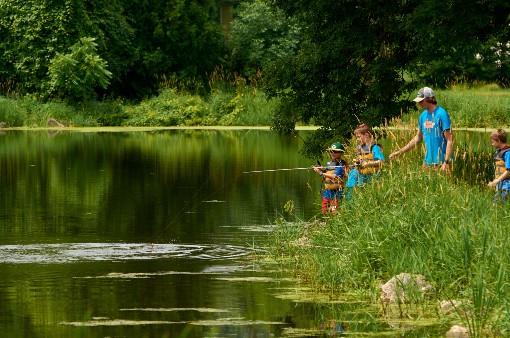Discover our rich roots
History of Monona
Monona’s Origins
Originally settled on by the Ho-Chunk People, what is now Monona served as not only home for the Ho-Chunk, but also a trading post and meeting ground for many area tribes. Tribes from as far away as Michigan and Minnesota journeyed to Monona to engage in trade, diplomacy, marriage, and celebrations.
For centuries, the Ho-Chunk People lived, farmed, raised families, and buried their dead in what today is called Monona. Their indelible mark can still be seen today through the Ho-Chunk effigy mounds. The Mounds or Moš’ok were built during ceremonial and burial rituals to represent the worldview and religious beliefs of the Ho-Chunk people. Effigy mounds were so named because many were built in the forms of birds and animals, mammals, humans, and other forms. The mounds are like the earth and stone monuments around the world inspired by deep faith and beliefs. Built primarily from 650-1200, the Moš’ok serve as a way for the Ho-Chunk of today to connect with their ancestors. They also serve as a reminder to those of us not of the Tribe that there was a vibrant community here filled with proud People, long before there was a town called Monona.



Incorporation as a village
Originally part of the Town of Blooming Grove, Monona was incorporated as a village on August 29, 1938, in the back of Ernie’s Trading Post (now Monona Motors), when area residents grew frustrated by the lack of city services they received from Blooming Grove. Previous to incorporation, the area had consisted mainly of farmland and summer homes. During the Prohibition years, there were a number of speakeasies, off-book gambling parlors, and houses of ill repute in the area between Broadway and Bridge Road. In fact, it was said if you were looking for a night out, you could pay a taxi driver a quarter in downtown Madison and ask to be dropped at the Black Bridge in Monona, where a quiet night was unheard of.
After incorporation, the village developed many public services including police and fire protection, street maintenance, and the provision of sewer and water utilities. During the 1950s, the village grew from 2,544 to 8,178. This was the largest percentage increase (231%) of any community in the state during this decade.
This population increase necessitated expanding the village facilities and services. In 1963, the village built a community center and adjacent swimming pool near the intersection of Nichols Road and Healy Lane. In 1967, the village built a public library at the corner of Nichols and Schluter Roads. After Monona changed to city status in 1969, a City Hall was built across from the library on Nichols Road. This building housed all city operations (including the fire and police departments).
Commercial Development
During the 1960s, there was a significant increase in commercial development in Monona. Most of this development took place along Monona Drive.
Monona annexed a substantial number of properties in the 1960s and 1970s for residential, commercial, and industrial purposes. By the 1980s, there was no additional land available for annexation. Monona became landlocked by the City of Madison and by bodies of water.
The next major change Monona faced came during the 1970s and 1980s with the development of the area along the Broadway Corridor from what is now South Towne Drive east to Bridge Road.
Present Day
With the completion of the U.S. Highway 12/18, the city has been working to find the most suitable ways to develop and redevelop the area along the Broadway Corridor. The Treysta Building, the Riverfront Project, and Grand Crossing Park developments are the result of these efforts. As our city creeps toward its centennial, we continue to look to the future by remembering the lessons of the past.
History of Monona, WI
Over the Years
Settled on by the Ho-Chunk People
Originally settled on by the Ho-Chunk People, what is now Monona served as not only home for the Ho-Chunk, but also a trading post and meeting ground for many area tribes. For centuries, the Ho-Chunk People lived, farmed, raised families, and buried their dead in what today is called Monona.
August 29, 1938
Monona incorporated as a village
Originally part of the Town of Blooming Grove, Monona was incorporated as a village on August 29, 1938, in the back of Ernie’s Trading Post (now Monona Motors), when area residents grew frustrated by the lack of city services they received from Blooming Grove.
1950s
Population boom
During the 1950s, the village grew from 2,544 to 8,178. This was the largest percentage increase (231%) of any community in the state during this decade.
1963-1967
Expansion in facilities, services, and commercial development
The population increase necessitated expanding the village facilities and services. These included a community center and a swimming pool, and a public library.
1969
Changed to city status
After Monona changed to city status in 1969, a City Hall was built across from the library on Nichols Road. This building housed all city operations.
1970-80s
Further expansion
The city developed the area along the Broadway Corridor from what is now South Towne Drive east to Bridge Road. By the 1980s, the city became landlocked by the City of Madison and by bodies of water.
2021
Present Day
With the completion of the U.S. Highway 12/18, the city has been working to find the most suitable ways to develop and redevelop the area along the Broadway Corridor.


Share Your Monona Experiences With Us
Tag us on Facebook @DiscoverMononaWisconsin




This is the official visitor site for Monona, Wisconsin. Learn about the town's history, find places to stay, things to do, restaurants, shops, and more.
Photos by Bruce Fritz
Sponsored by:









